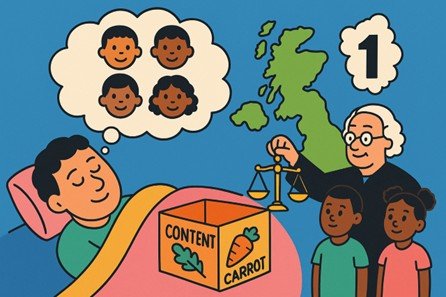How to Improve your Memory
How to Improve Your Memory
Many people say they want to learn more, but what they actually need is to remember more.
Most people, when they read books or attend training sessions, remember very little of what they read or hear. The problem is not poor attention. The problem is that we do not know how to get the best from our memory.
Here is the answer: Make use of visualisation - and the best way to do that is by drawing.
For example, to learn the Italian phrase 'ci sono' (which means 'there are'), I drew a cheese sandwich. The phrase 'cheese sandwich' sounds just enough like 'ci sono' to make the memory stick. Then I drew it.
Do not just think of the image: draw it! And if you want, you can even ask AI to create a better drawing for you. That combination makes the memory permanent.
Then I tackled something more complex: Martin Luther King's famous speech:
"I have a dream that my four little children will one day live in a nation where they are not judged by the colour of their skin, but by the content of their character."
In order to memorise the speech, I drew this picture.

The word 'character' is too abstract to picture, so I swapped it for 'carrot' and drew a carrot inside a box labelled 'content'. It sounds silly, but that sentence is now locked in my memory. (And yours too?)
The point is not to worry about artistic skill. It is the act of drawing that simultaneously activates the visual, motor, spatial, and language areas of your brain - combined. It forces clarity. It creates memory hooks. And it works.
If you want to remember what you learn, or if you want other people to remember what you teach, then draw it. A small sketch or doodle will often outlast any line of text.
Later, you can ask AI to turn your sketch into a polished version. With a few reviews, that image will stay with you forever.
Drawing makes learning physical. It turns memory into a sensory experience - something that is real. And once a memory is experienced, it sticks.
Definition: memory sketch
A memory sketch is a learning technique used in training where the learner draws a quick, simple picture with brief words as soon as new material is met. The action links sight, touch, space and language at the same time, fixes the idea strongly in the mind and later acts as a clear cue for recall.
Show CG4D Definition
- Combines a fast hand-drawn image with a few key words
- Created during or right after the learning event
- Engages visual, motor, spatial and language brain areas together
- Serves as a cue that triggers full recall without the original text
Article Summary
To improve memory, do not just read-draw. Each quick sketch turns a thought into a picture, firing sight, touch and language at once; that rich trace, polished later by AI if you wish, locks the lesson in your mind long after words fade.
Frequently Asked Questions
Here are some questions that frequently get asked about this topic during our training sessions.
Why does drawing help me remember better than rereading notes?
What is a memory sketch?
How do I create a memory sketch step by step?
Do I need artistic skill for drawing to improve memory?
Can AI images replace my hand-drawn memory tool?
How can drawing help me learn foreign phrases fast?
Will memory sketches work for memorising a long speech?
Thought of something that's not been answered?
Did You Know: Key Statistics
A 2022 study in Frontiers in Psychology found that students who added sketches to their notes scored 23% higher on delayed memory tests than those who used words only. Google Trends shows global searches for the term 'sketch notes' rose by 240% between January 2020 and January 2024, signalling growing public interest in visual study tools.Blogs by Email
Do you want to receive an email whenever we post a new blog? The blogs contain article 5-10 minutes long - ideal for reading during your coffee break!
Further Reading in General Development
-
What is the OSCAR Coaching Model?
Learn how the OSCAR coaching model turns vague aims into SMART goals, clear actions and ongoing reviews so you drive personal change and team success.
Read Article > -
After Brexit Vote: What is the plan now?
Explore the post-Brexit economy; a free market plan that swaps EU rules for choice, trims red tape and lets 65 million Britons shape their own growth story.
Read Article > -
Training Should Not Be a Box‑Ticking Exercise
End box-ticking courses. Proper, purposeful training builds communication, leadership and decision skills, raising personal and business performance today.
Read Article > -
How do you train leaders and manage change?
Discover leader training for change management. Build an adaptive mindset, practical skills and emotional intelligence to guide teams through rapid tech shifts.
Read Article > -
Turn Worry Into Plans
Learn how to turn worry into action with five clear planning steps. Cut anxiety, lift mental health and move towards your goals with proven, easy habits.
Read Article >
Looking for Leadership and Management Training?
If you're looking to develop your General Development Skills, you may find this Leadership and Management Training Course beneficial:
Open Training Course Pricing and Availability
Next Open Course Starts in 10 days, Cheltenham Gloucestershire, places available






